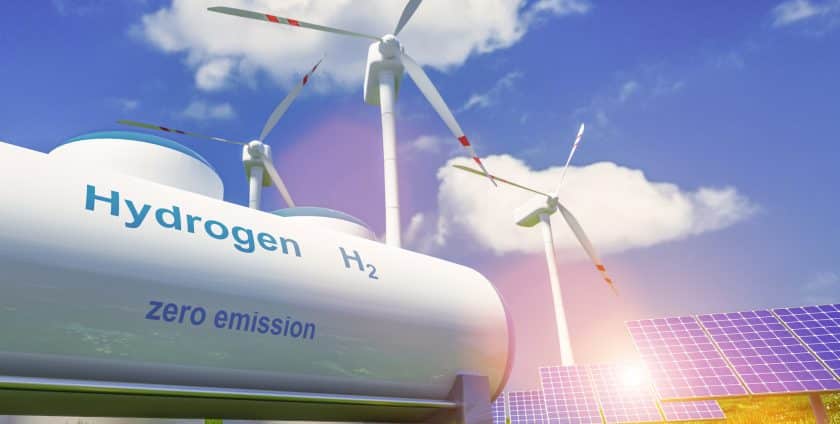
- By: admin
- 0 comment
The Different Colours of Hydrogen
Hydrogen will be key in helping the UK reach net zero GHG emissions by 2050. What is meant by the different colours of hydrogen?
Hydrogen is currently the only practical option for the decarbonisation of steel production, shipping and long-haul air travel.
Hydrogen will be necessary for long distance transport of goods and passengers by road. All the major truck manufacturers are developing hydrogen powered trucks. By 2030 they are expected to reach cost parity with diesel powered vehicles and account for 10% of new truck and coach sales.
The challenge will be to scale up low carbon and zero carbon hydrogen production to meet the anticipated demand. The government is supporting the production of hydrogen and announced 75 projects being developed across the UK in July 2022. Most of these are for green or blue hydrogen. The table below explains the different types (colours) of hydrogen production.
| White Hydrogen | Hydrogen is a naturally occurring geological hydrogen found in underground deposits and created through fracking. There are no strategies to exploit this hydrogen at present. |
| Green Hydrogen | Green hydrogen is made by using clean electricity from surplus renewable energy sources, such wind power, to electrolyse water. Electrolysers use an electrochemical reaction to split water into its components of hydrogen and oxygen, emitting zero-carbon dioxide in the process. |
| Yellow Hydrogen | Yellow hydrogen is hydrogen made through electrolysis using solar power. |
| Pink Hydrogen | Pink hydrogen is generated through electrolysis of water by using electricity from a nuclear power plant. |
| Blue Hydrogen | Blue hydrogen is produced mainly from natural gas, using a process called steam reforming, which brings together natural gas and heated water in the form of steam. The output is hydrogen – but also carbon dioxide as a by-product. That means carbon capture and storage (CCS) is essential to trap and store this carbon. |
| Turquoise Hydrogen | Turquoise hydrogen is made using a process called methane pyrolysis to produce hydrogen and solid carbon. In the future, turquoise hydrogen may be valued as a low-emission hydrogen, dependent on the thermal process being powered with renewable energy and the carbon being permanently stored or used. |
| Grey Hydrogen | Currently, this is the most common form of hydrogen production. Grey hydrogen is created from natural gas, or methane, using steam methane reformation but without capturing the greenhouse gases made in the process. |
| Black Hydrogen | Black hydrogen is produced from coal. The black refers to the type of coal bituminous (black). The gasification of coal is a method used to produce hydrogen. However, it is a very polluting process, and CO2 and carbon monoxide are produced as by-products and released to the atmosphere. |
| Brown Hydrogen | Brown hydrogen is produced from lignite (brown) coal. The gasification of coal is a method used to produce hydrogen. However, it is a very polluting process, and CO2 and carbon monoxide are produced as by-products and released to the atmosphere. |
Jean-François Lowes has delivered sustainability reporting for clients since 2008. He speaks regularly at conferences on greenhouse gas reporting and carbon reduction plans.
You can contact Jean-François on jeanlowes@ghginsight.com
© 2023 Sustainability Vision Ltd
Do you need to report your Carbon Emissions? GHGi Analytics takes the pain out of GHG Emissions reporting.